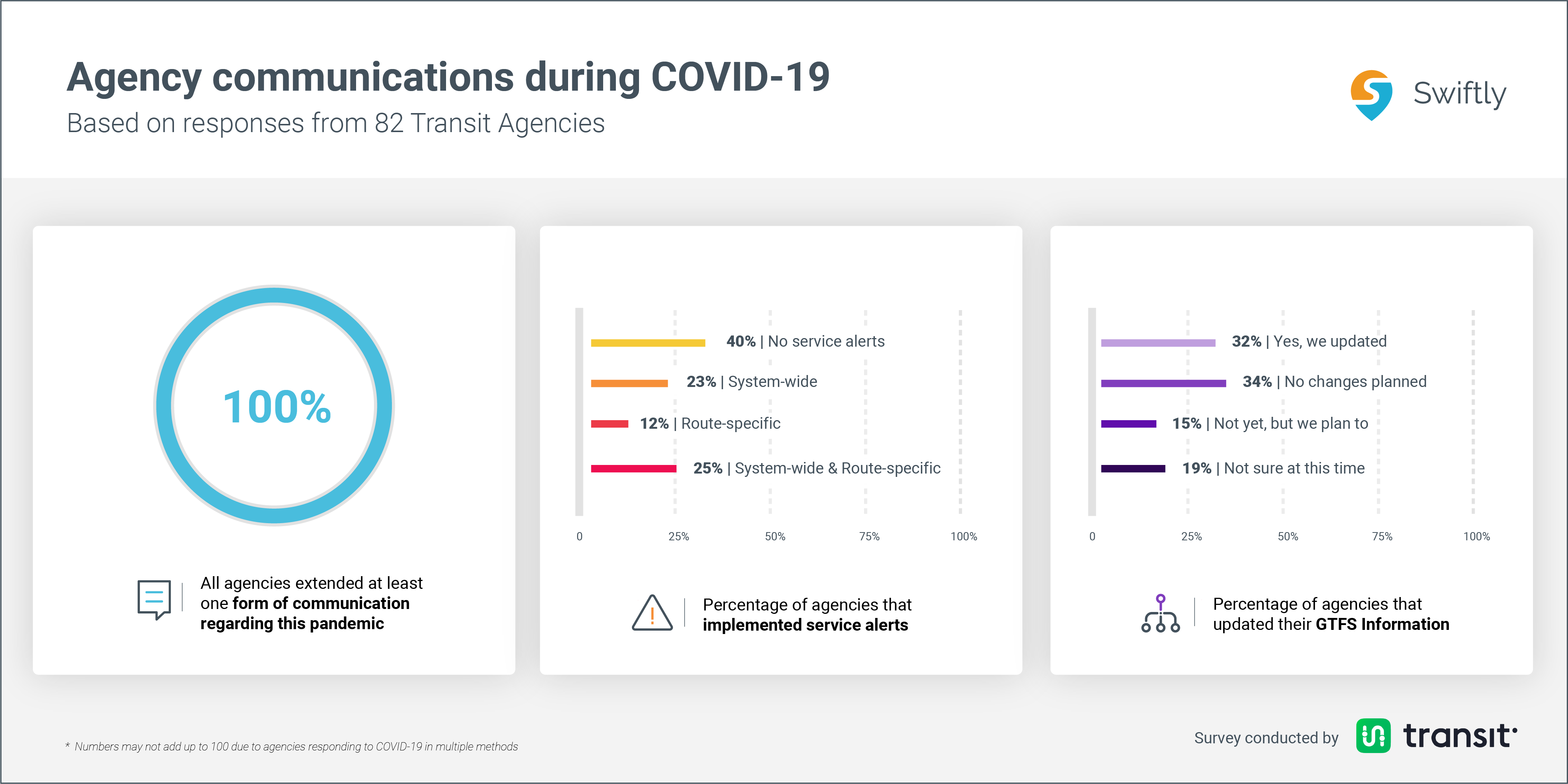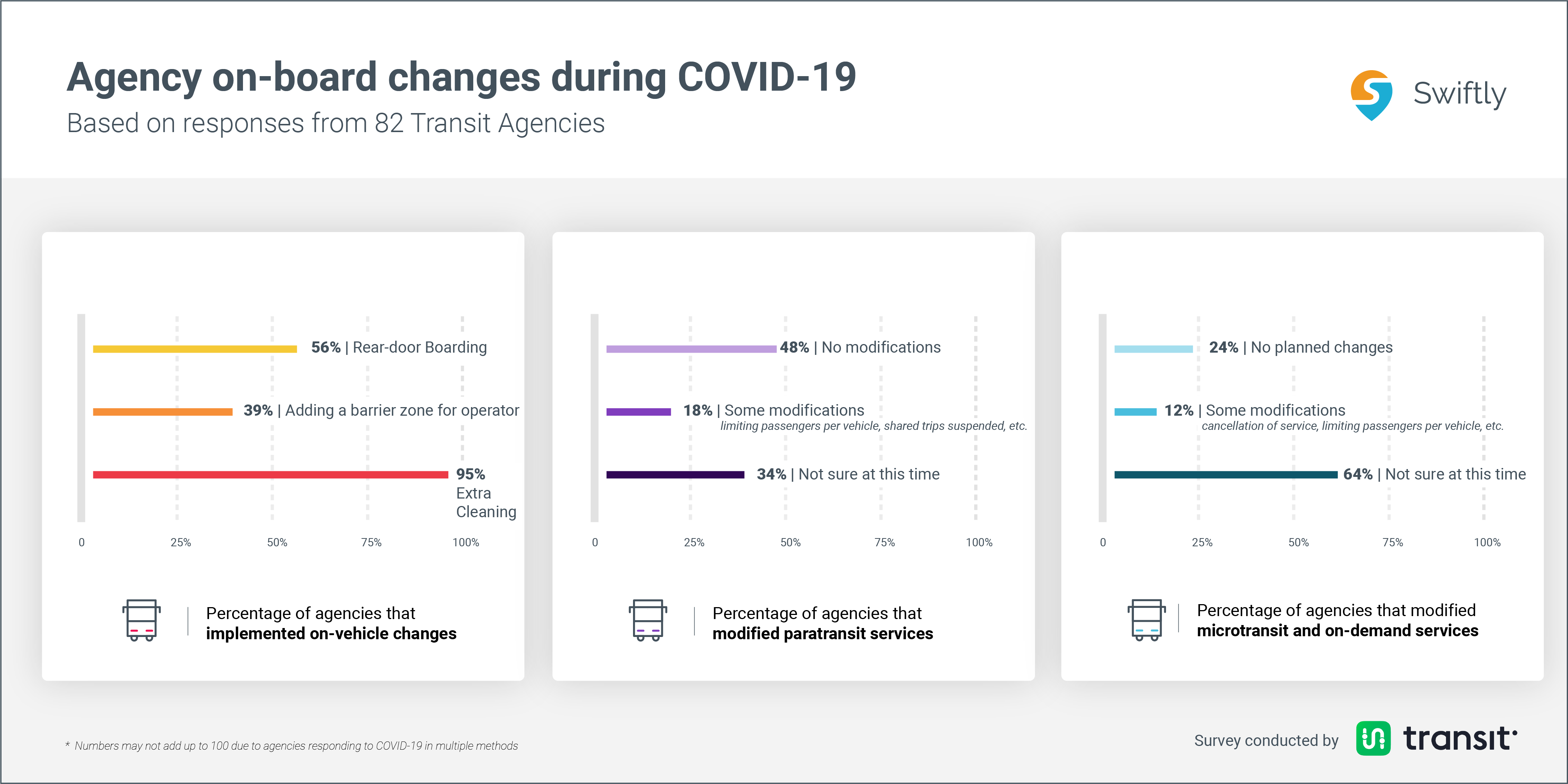How Public Transit Agencies are Responding to COVID-19 & Official Recommendations

Who will you meet?
Cities are innovating, companies are pivoting, and start-ups are growing. Like you, every urban practitioner has a remarkable story of insight and challenge from the past year.
Meet these peers and discuss the future of cities in the new Meeting of the Minds Executive Cohort Program. Replace boring virtual summits with facilitated, online, small-group discussions where you can make real connections with extraordinary, like-minded people.
The American Public Transportation Association (APTA), the Canadian Urban Transit Association (CUTA), and the International Association of Public Transport (UITP) have all released recommendations to help agencies during the COVID-19 outbreak. Agencies have had to act fast to protect riders and staff, and make difficult decisions to adapt to evolving conditions.
So what do these recommendations call for, and how are agencies using them? Much of the advice is centered around keeping staff and riders distanced from each other and protected from contact with the virus. Here, we present APTA, CUTA, and UITP’s recommendations and a window into what they look like in practice, by looking at survey results from Transit, which received information from more than 60 transit agencies on what policies they are putting in place to safely ride out the pandemic.
Got questions about how transit agencies are responding to COVID-19? Register for our interactive webinar discussion happening on April 8.
Communication
One of the most important actions agencies can take to protect their riders and their employees is to communicate their plans and keep everyone informed. It’s why APTA, CUTA, and UITP issued multiple recommendations around communication:
Official recommendations (and who recommends them):
- Simple/straightforward communication (APTA)
- Provide internal communication to operators and staff on proper hygiene and COVID-19 status (CUTA/UITP)
- Use media to inform passengers (APTA/CUTA/UITP)
- Review transit agency/municipal pandemic management plans and increase communication with local health authorities (APTA/CUTA/UITP)
What agencies are doing:

Employee Procedures
Transit professionals working on the front lines are getting daily exposure to COVID-19, and agencies need to do everything they can to protect them. Transit agencies might institute protocols for those essential employees, and limit exposure for the rest of their staff.
Official recommendations (and who recommends them):
- Develop protocols for frontline staff (CUTA/UITP)
- Work from home for activities that do not require physical presence (UITP)
What agencies are doing:

On-board Changes
There are a lot of practical recommendations for agencies on how to enhance cleaning and enact social distancing measures to maintain safety and keep transmission low. This is where agencies can get into the nuts and bolts of what to do on board vehicles.
Official recommendations (and who recommends them):
- Separate operators and customer service staff from passengers (like with an operator shield) (APTA/CUTA/UITP)
- Personal protection equipment (APTA)
- Sanitation for system and provide operators with sanitizer(APTA/CUTA/UITP)
- Ventilation (APTA)
- Rear-door boarding (CUTA/UITP)
- Screen paratransit and specialized transit passengers for COVID-19 during the booking process (CUTA/UITP)
What agencies are doing:

Service Changes
Official guidelines state across the board that service should be modified. Staff is reduced and people are using transit less often due to the closing of schools, offices, and non-essential businesses. Many public transit agencies have found success by offering a weekend/holiday schedule and adjusting service for their area’s needs.
Official recommendations (and who recommends them):
- Change service patterns based on local considerations/social distancing (APTA/CUTA/UITP)
What agencies are doing:

Fare Policy
Eliminating or reducing fare collection and enforcement achieves several important goals at once: It eliminates the need for interactions between the bus driver and passengers and it prevents people from clustering around ticket-taking stations. It also eliminates any risks from collecting currency itself, as the virus has been shown to live on paper and metal.
Official recommendations (and who recommends them):
- Eliminate/reduce fares Eliminate ticket inspection (UITP)

High-level Action
Public transit needs legislative support now more than ever. Public transit is an essential service and the lifeblood of our cities. With ridership taking a nosedive, transit agencies aren’t getting the funds that are critical to maintaining operations. And transit workers are interacting with the public more than most, making them one of our more vulnerable populations. Public transit needs protective legislation and critical funding.
Official recommendations (and who recommends them):
- Legislative action (APTA)
- Legislative request (CUTA)
Ask other transit professionals to learn more
Want to learn more about how transit agencies are responding to COVID-19? Join other transit professionals in our “ask me anything” webinar, you can use our interactive format to pose questions, start discussions, and share best practices on the important topics for you and your agency. Please note: this is a purely a community-building webinar to share best practices. There will NOT be any commercial or product references in the webinar.
Register today for Public Transit in the Time of COVID-19, presented by Swiftly and Transit. Wednesday April 8 at 10am PT / 1pm ET. Can’t make the live session? All registrants will receive a recording of the webinar to watch at their leisure, so RSVP today.
Discussion
Leave your comment below, or reply to others.
Please note that this comment section is for thoughtful, on-topic discussions. Admin approval is required for all comments. Your comment may be edited if it contains grammatical errors. Low effort, self-promotional, or impolite comments will be deleted.
Read more from MeetingoftheMinds.org
Spotlighting innovations in urban sustainability and connected technology
Middle-Mile Networks: The Middleman of Internet Connectivity
The development of public, open-access middle mile infrastructure can expand internet networks closer to unserved and underserved communities while offering equal opportunity for ISPs to link cost effectively to last mile infrastructure. This strategy would connect more Americans to high-speed internet while also driving down prices by increasing competition among local ISPs.
In addition to potentially helping narrow the digital divide, middle mile infrastructure would also provide backup options for networks if one connection pathway fails, and it would help support regional economic development by connecting businesses.
Wildfire Risk Reduction: Connecting the Dots
One of the most visceral manifestations of the combined problems of urbanization and climate change are the enormous wildfires that engulf areas of the American West. Fire behavior itself is now changing. Over 120 years of well-intentioned fire suppression have created huge reserves of fuel which, when combined with warmer temperatures and drought-dried landscapes, create unstoppable fires that spread with extreme speed, jump fire-breaks, level entire towns, take lives and destroy hundreds of thousands of acres, even in landscapes that are conditioned to employ fire as part of their reproductive cycle.
ARISE-US recently held a very successful symposium, “Wildfire Risk Reduction – Connecting the Dots” for wildfire stakeholders – insurers, US Forest Service, engineers, fire awareness NGOs and others – to discuss the issues and their possible solutions. This article sets out some of the major points to emerge.
Innovating Our Way Out of Crisis
Whether deep freezes in Texas, wildfires in California, hurricanes along the Gulf Coast, or any other calamity, our innovations today will build the reliable, resilient, equitable, and prosperous grid tomorrow. Innovation, in short, combines the dream of what’s possible with the pragmatism of what’s practical. That’s the big-idea, hard-reality approach that helped transform Texas into the world’s energy powerhouse — from oil and gas to zero-emissions wind, sun, and, soon, geothermal.
It’s time to make the production and consumption of energy faster, smarter, cleaner, more resilient, and more efficient. Business leaders, political leaders, the energy sector, and savvy citizens have the power to put investment and practices in place that support a robust energy innovation ecosystem. So, saddle up.






0 Comments